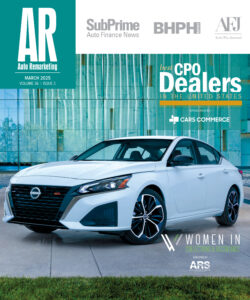Vehicle tech models make the case to be aces for automotive

You have likely heard of the acronym “ACES” or “CASE” to describe four areas in which technology and innovation are rapidly changing automotive.
Those four areas being, in whichever order put them, autonomy, connectivity, electrification and shared mobility.
Over at Autotech Ventures, they actually use the past tense of one of these acronyms: adding a “D” to the end of “CASE,” to refer to “digitization of enterprise,” says managing director Quin Garcia.
“The way we think about that is basically using IT to help large incumbent corporations to streamline their operations,” Garcia said in a phone interview.
That happens in two different ways, he said. The first is to streamline internal operations
“If you’re a manufacturing company or if you are a parts distribution company, you can use AI and IT to optimize your internal workflows. Industry 4.0 is a term that’s used for that,” Garcia said.
“Then the other way you could use IT to digitize your operations is your external relationship with the world, meaning the way that you interact with and communicate with your suppliers and your customers,” he said. “And that's also known as e-commerce.”
Garcia gives some examples of such “digitization of enterprise” companies within Autotech’s portfolio, which focuses on the “ground transportation” space and building bridges between startups and incumbents.
One of those companies is Frontier Car Group, a startup from Berlin that aims to “develop, launch, and operate used-automotive marketplaces within emerging market economies,” according to the Frontier website.
Frontier Car Group has primarily operated overseas, but did recently acquire We Buy Any Car, a buyer of used vehicles from the public with locations in the U.S. and U.K.
“They’re essentially enabling e-commerce in the used-car wholesale and retail world,” Garcia said of Frontier.
Another is Work Truck Solutions.
Within Work Truck Solutions is an online marketplace for new and used work trucks called Comvoy.com, which Garcia said is, “the first real marketplace for those types of vehicles.”
Meanwhile, another company in the digitization space within Autotech’s portfolio is Cogniac, which uses AI to “automate visual inspections of vehicles and auto parts.”
Beyond digitization of enterprise, Autotech remains interested in and has made several investments on the “CASE” side of the equation.
Arguably the most notable of Autotech Ventures’ investments has been in ride-sharing company Lyft, which is now publicly traded. It also included DeepScale, which provides computer vision in autonomy. The firm recently sold that to Tesla.
Portfolio company XNOR.AI was recently purchased by Apple, to be used for both connectivity and autonomy purposes.
Certain elements of “CASE” tend to get the most media attention. Others may be more imminently practical. But which one is getting the most interest from the investment community?
“There continues to be investments in all of these areas,” said Joe Vitale, global automotive leader at Deloitte. “I think the focus appears to be more around those technologies they can bring to market quickly.
“What we’re seeing is a lot of focus around ADAS and those things that are providing technologies that make vehicles safer — collision avoidance and the like,” he said. “They will continue to invest in those things that have a near-term commercial buy-ability associated with them.”
Vitale also points to Deloitte’s 2020 Global Automotive Consumer Study, which shows an increasing interest in and need for electric vehicles among consumers.
In the U.S., the percent of consumers “actively considering” buying an alternative-powertrain vehicle (including hybrid-electric, batter-electric and other options) during their next purchase has climbed from 29% in 2019 to 41% this year, according to the study.
The numbers are even higher elsewhere in the world. India is at 49% (up from 39% in 2019). Germany is at 51%, up from 37%.
China’s preference for alternative powertrains has dipped from 65% a year ago, but is still at 57%. The Republic of Korea is at 58%, up from 43%. Meanwhile, Japan’s interest in these vehicles has climbed from 59% to 63%.
“I think there has been a significant shift in capital allocation towards electric vehicles, partly driven by the demands of consumers and interest in sustainable, safe vehicles and also to maintain compliance with regulations,” Vitale said.
What’s more, in places like Europe, he said, restrictions on the use of internal-combustion-engine vehicles could mean “we'll continue to see significant focus on investments around electric vehicles.”
In a news release, Craig Giffi, who is vice chairman of Deloitte Insights and global managing principal, Deloitte LLP, said: “Technologies in the alternative powertrain domain appear to be advancing to a point where they have offset some of the concerns we have seen over the past decade.
“However, to encourage the consumer uptake of advanced vehicle technologies, the automotive ecosystem still has some work to do in terms of making EVs as easy and convenient as internal combustion engines, lowering the cost of EVs, and figuring out just who will build and pay for the charging infrastructure,” Giffi said.
On the autonomous side, the Deloitte study found that consumer viewpoints have “stalled” when it comes to safety of these vehicles. Forty-eight percent of U.S. consumers believe fully autonomous vehicles would not be safe and 68% think fully autonomous commercial vehicles would not be safe enough on highways.
Similar results were found elsewhere in the world, with other countries having close to half of their respondents expressing concerns on AV technology’s safety.
“In fact, in India and China, the percentage of people that think autonomous vehicles will not be safe has increased to 58% and 35%, respectively,” Deloitte said in a news release. “This trend goes hand in hand with consumers' views on testing autonomous vehicles, with over half of consumers in India (57%) and the U.S. (51%) concerned by the idea of autonomous vehicles being tested in areas where they live.”
Over at Fraser McCombs Capital, an investment firm in the auto technology and mobility space, managing partner Chase Fraser said: “You’ve got to choose right with autonomy. It got a bit overheated. Evaluations went crazy for a lot of these autonomous businesses.”
The buzz in mainstream media around fully autonomous vehicles was perhaps a bit premature, if not overstated.
“Think about the big publications love to talk about these Level 4 and 5 cars going to be driving around tomorrow,” Fraser said. “Even when they were doing all that a year and two years ago … it wasn't accurate.
“You had big regulatory hurdles,” he said. “And the challenge at Level 4 and 5 is, it’s 95% there, but it’s that last 5% that’s the problem. And that last 5% takes a long time to get to a place that you’ll see these vehicles.”
FMC is looking at simulation companies that would play in that last 5%, using AI algorithms to simulate both computer- and human-generated scenarios “where we can bridge that gap, that last 5% for autonomy,” Fraser said.
But going further back to the basics of autonomy, Fraser points out “you need a connected vehicle in order or it to be autonomous.”
Connectivity, a “baby step” in this process, is “very hot,” and FMC has made several investments in the space, two of which are GuardKnox, an Israel-based company in the vehicle cybersecurity space, and Aurora Labs, which provides over-the-air updates to vehicle computer systems.
Investors “can see a more immediate return” in connectivity, Fraser said.
And then there is shared mobility, which would include — among other models — the ride-sharing services many of us use on a regular basis.
While the Lyft and Uber initial public offerings “were truly not great” and the stocks were challenged last year, Fraser said analyst reports indicate those companies have “cleaned up the mess a little bit” and perhaps there will be a rebound in their stocks this year.
“We still like shared. I think that model is a little immature and you do need autonomy to make those businesses profitable,” Fraser said. “You can get profitable by cutting a lot of other expenses. But what that essentially means is the fares are more expensive and you pay the drivers less … I just don't know that that's a feasible path for Uber and Lyft.”
Within the shared mobility space, FMC is invested in a company call Via, which provides Software-as-a-Service for municipalities.
For example, a city might have a bus route. The city could use the Via system to streamline the operations and optimize passenger capacity, to where instead of a bus making the route, it is a minivan or small bus, managed by entrepreneurs, making the rounds. The city could, in essence, reduce or eliminate the need for buses, using smaller, less costlier vehicles.
“You take a ton of cost out of the system for these cities,” Fraser said. “We think that's going to be a really interesting play. And Via’s doing quite well.”

 View The Latest Edition
View The Latest Edition

